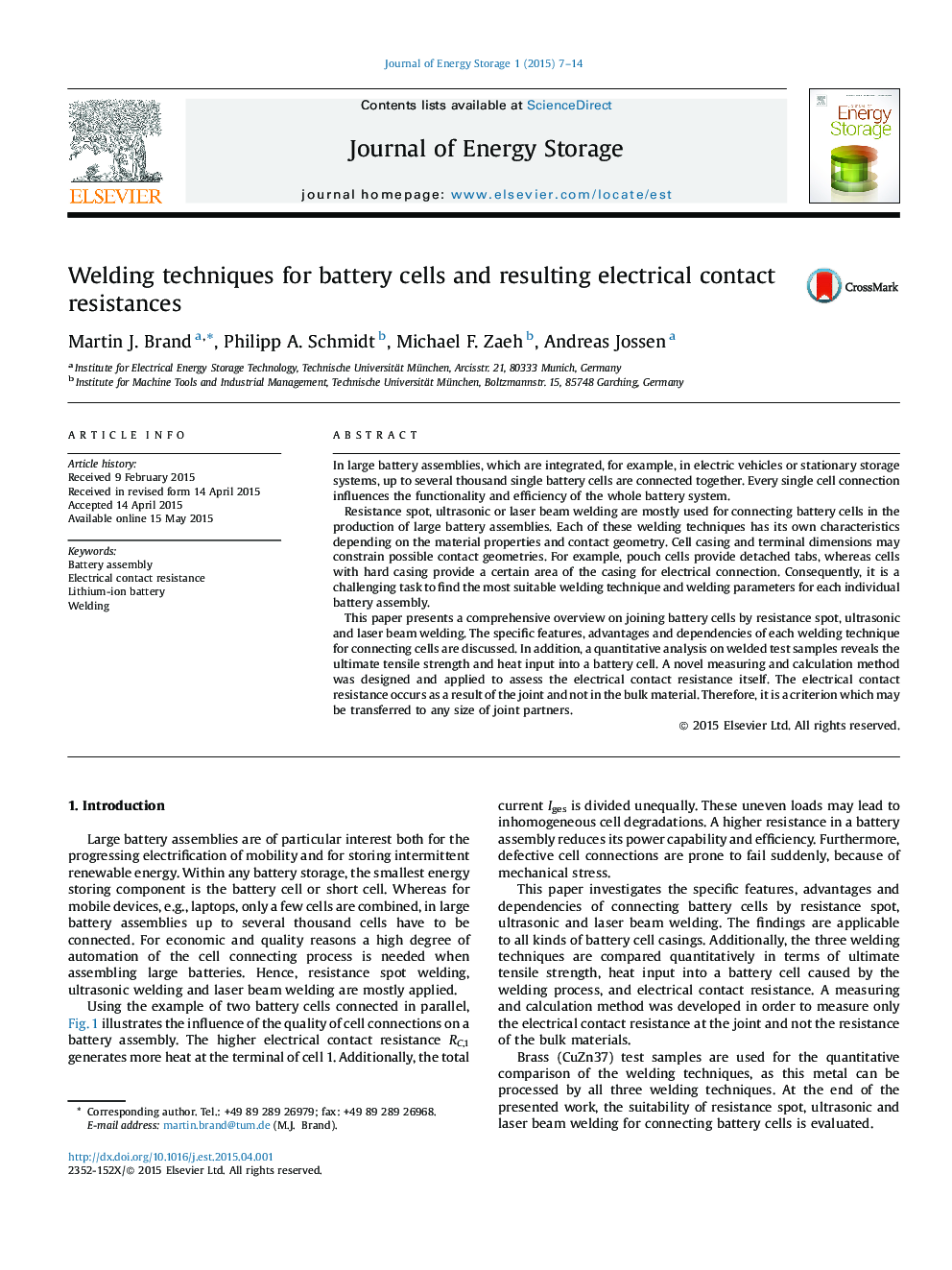| Article ID | Journal | Published Year | Pages | File Type |
|---|---|---|---|---|
| 1133139 | Journal of Energy Storage | 2015 | 8 Pages |
In large battery assemblies, which are integrated, for example, in electric vehicles or stationary storage systems, up to several thousand single battery cells are connected together. Every single cell connection influences the functionality and efficiency of the whole battery system.Resistance spot, ultrasonic or laser beam welding are mostly used for connecting battery cells in the production of large battery assemblies. Each of these welding techniques has its own characteristics depending on the material properties and contact geometry. Cell casing and terminal dimensions may constrain possible contact geometries. For example, pouch cells provide detached tabs, whereas cells with hard casing provide a certain area of the casing for electrical connection. Consequently, it is a challenging task to find the most suitable welding technique and welding parameters for each individual battery assembly.This paper presents a comprehensive overview on joining battery cells by resistance spot, ultrasonic and laser beam welding. The specific features, advantages and dependencies of each welding technique for connecting cells are discussed. In addition, a quantitative analysis on welded test samples reveals the ultimate tensile strength and heat input into a battery cell. A novel measuring and calculation method was designed and applied to assess the electrical contact resistance itself. The electrical contact resistance occurs as a result of the joint and not in the bulk material. Therefore, it is a criterion which may be transferred to any size of joint partners.
